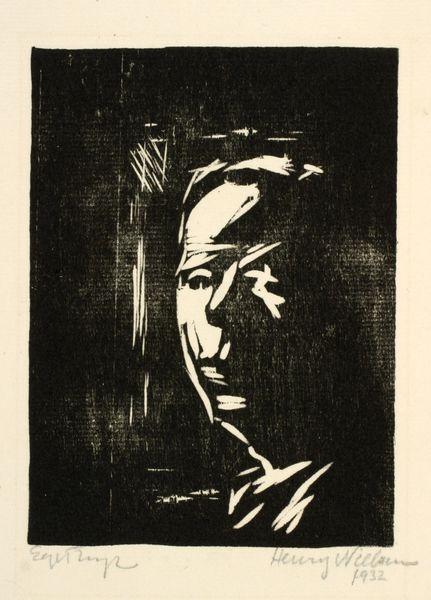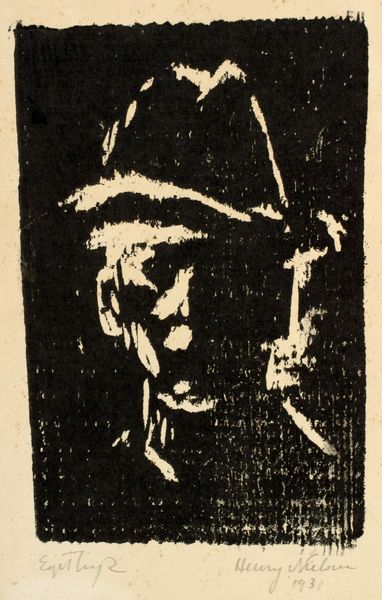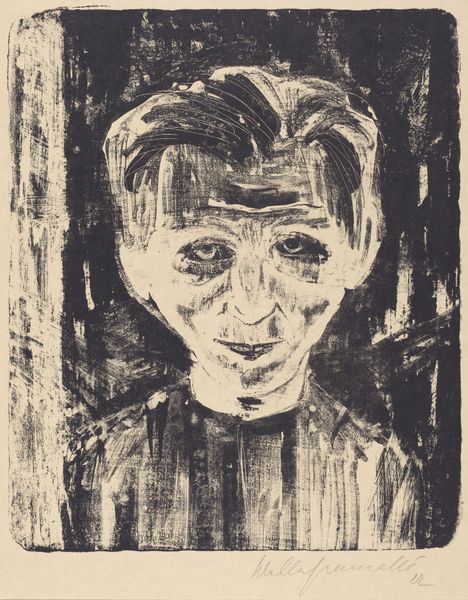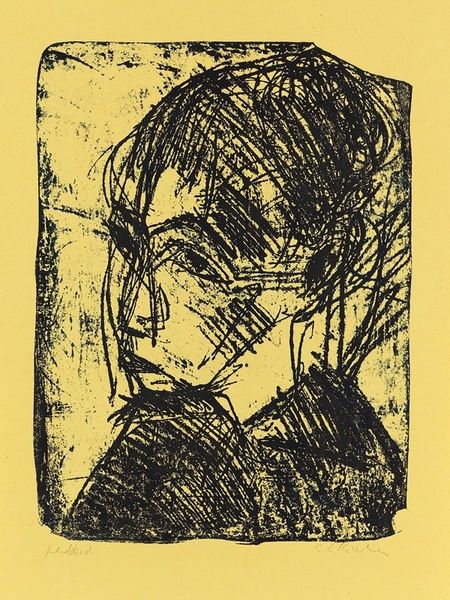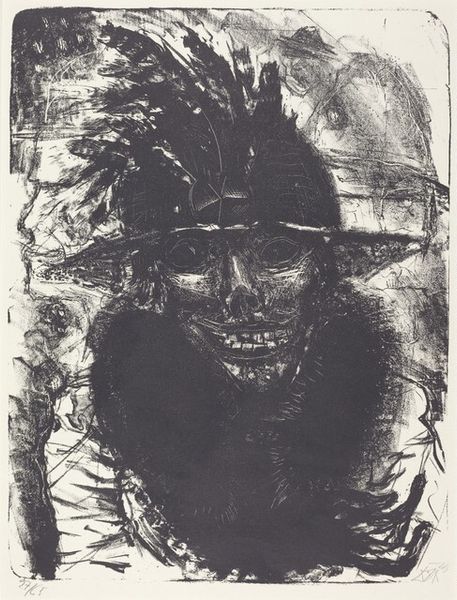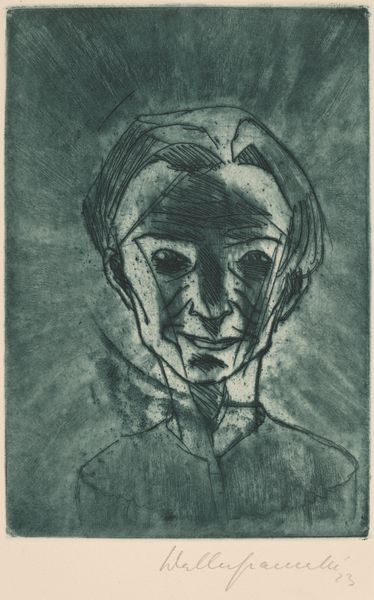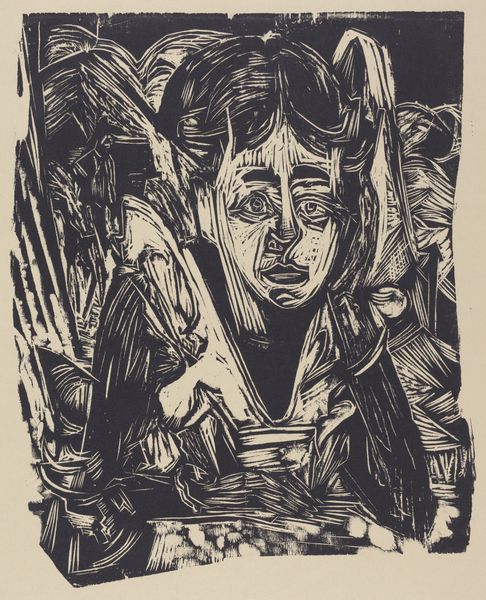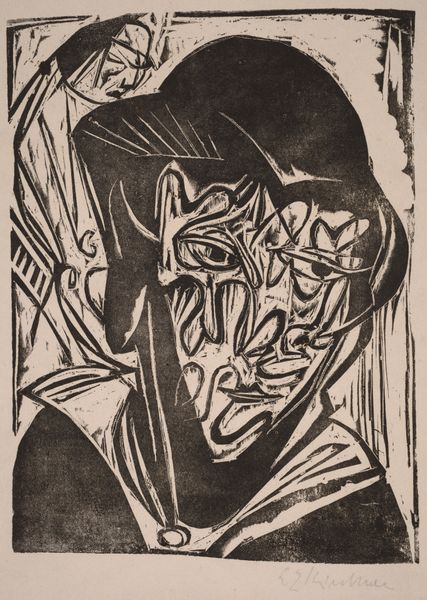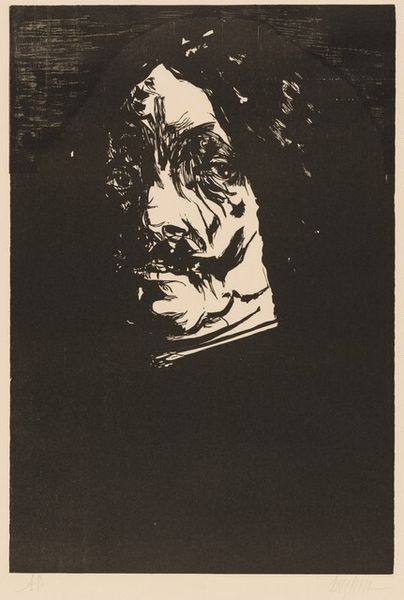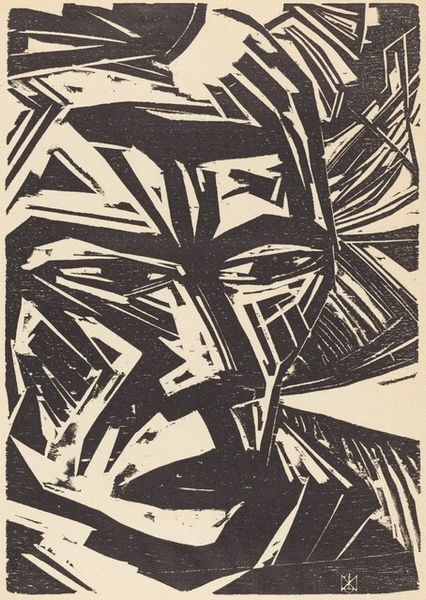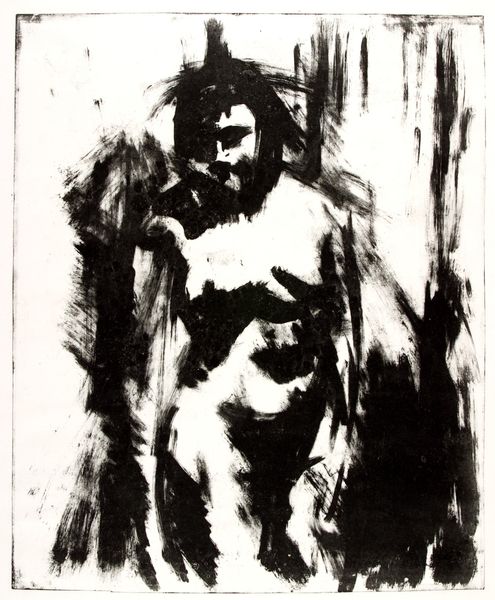
Dimensions: 164 mm (height) x 107 mm (width) (billedmaal)
Curator: This is "Drengeportræt," or "Boy Portrait," a 1932 woodcut by Danish artist Henry Nielsen, currently held at the Statens Museum for Kunst. Editor: It strikes me as unsettling. The high contrast and stark, fragmented lines give it a raw, almost tormented feel. Is that intentional, or a product of the medium? Curator: Expressionism often delves into difficult emotional states. Considering the rise of fascism in Europe during the 1930s, this piece may reflect a broader societal anxiety. The boy's obscured face could symbolize a generation robbed of clarity and certainty. Editor: You see a society reflected in it. I'm drawn to how the artist manipulated light and shadow. The figure emerges from the darkness, but remains incomplete. The sharp, splintered lines disrupt any sense of smoothness or tranquility. The monochrome palette adds to the starkness. Curator: Right, Nielsen's choice of monochrome simplifies the narrative and directs focus to the interplay of form and negative space to reveal a more symbolic, emotional understanding of identity. In woodcut, such bold use of monochrome has radical implications for expressing one's personal sense of cultural awareness. Editor: And those negative spaces feel so important; they aren't just background. They shape the face, suggest movement. The way the light catches in the eyes—it's a flicker of something. Almost a fight to be seen in darkness. Curator: Exactly. Expressionist artists weren't simply portraying physical appearances; they sought to depict inner states and lived experiences shaped by turbulent times, giving form to things felt more than things seen. It's a psychological portrait as much as a physical one. Editor: It leaves you with more questions than answers, and that's powerful. It is more felt than known. Curator: Precisely, the artwork offers a glimpse into the anxieties of a specific moment, speaking across generations about the loss of innocence. Editor: Yes, while understanding its form is key, seeing how such forms might give shape to an emotional reality definitely unlocks this haunting image.
Comments
No comments
Be the first to comment and join the conversation on the ultimate creative platform.
